Gas Springs: Types, Applications and Industrial Selection Guide
Table of Contents
Introduction to Gas Springs
Gas springs are mechanical devices that use compressed gas (typically nitrogen) to generate force and provide controlled damping. These pneumatic components are essential in numerous industrial applications where precise motion control, weight support, or damping is required.
Unlike conventional mechanical springs, gas springs offer significant advantages such as constant force throughout their stroke, adjustable damping capability, and extended service life with minimal maintenance. At Pneumatig, we offer a wide range of gas springs designed to meet the demanding requirements of American industry.
Operating Principle
The operation of a gas spring is based on fundamental physical principles related to gas compression. Each gas spring contains:
- Pressure chamber: Sealed and filled with compressed nitrogen
- Piston and rod: That moves within the cylinder
- Seals and gaskets: That ensure the system remains airtight
- Hydraulic oil: In models with damping, to control extension speed
When the spring is compressed, the rod enters the chamber, reducing the volume available for the gas and increasing its pressure according to Boyle's Law. This pressure generates the extension force that characterizes these devices. Precision in manufacturing and quality control are essential to ensure consistent and reliable performance over time.
Key Takeaways: Operating Principle
- Gas springs use compressed nitrogen to generate controlled force.
- Gas pressure increases when compressing the spring, creating extension force.
- Models with damping incorporate oil to control movement speed.
Types of Gas Springs
There are various types of gas springs, each designed for specific applications according to force requirements, size, and functionality:
By Function
- Compression springs: The most common, they generate extension force when compressed. Ideal for supporting lids, doors, or covers.
- Tension springs: Work in reverse, generating force when extended. Used in applications where elements need to be kept together or closed.
- Lockable springs: Allow movement to be locked in certain positions, providing additional stability.
- Springs with damping: Incorporate damping systems to control movement speed, preventing sudden closures or openings.
By Size and Capacity
At Pneumatig, we offer various series of gas springs classified according to their diameter and load capacity:
- Type 16/1 Ø6/15 - Compact springs for lightweight applications
- Type 16/2 Ø8/18.5 - Balance between size and force
- Type 16/4 Ø10/22 - For medium-load applications
- Type 16/6 Ø14/28 - Robust springs for heavy loads
SUSPA Gas Springs and Other Premium Brands
SUSPA gas springs are recognized for their superior quality and precision manufacturing. These high-end components offer:
- Greater durability and resistance to extreme conditions
- Precision in applied force
- Better corrosion resistance
- Customized options for specific applications
In addition to SUSPA, we work with other leading brands that meet the most demanding standards of the American industrial market.
Industrial Applications of Gas Springs
Gas springs find application in numerous industrial sectors thanks to their versatility and reliability:
Industrial Machinery
- Safety covers: Facilitate access to internal components while ensuring controlled closure.
- Adjustment systems: Allow precise positioning of machinery elements and maintain them in position.
- Access hatches: Provide assistance in opening and closing heavy doors in industrial equipment.
Automotive and Supporting Industries
- Assembly lines: Support tools and components to facilitate ergonomic operations.
- Testing equipment: Allow precise adjustments in test benches and diagnostic equipment.
- Paint booths: Facilitate access to components while maintaining stable positions.
Medical and Pharmaceutical Sector
- Medical equipment: Allow precise adjustments in stretchers, chairs, and diagnostic equipment.
- Specialized furniture: Facilitate ergonomic adjustment of workstations in laboratories.
Industrial Furniture and Ergonomics
- Adjustable workstations: Allow adaptation of height and position of work surfaces.
- Storage systems: Facilitate access to elevated or heavy compartments.
- Doors and hatches: Provide assistance in opening and control in closing.
Key Takeaways: Applications
- Gas springs are versatile components used across multiple industrial sectors.
- They provide assistance in movement, positioning, and weight control in machinery.
- They contribute significantly to ergonomics and safety in industrial environments.
Gas Spring Selection Guide
Proper selection of a gas spring is crucial to ensure correct operation and durability. These are the key factors to consider:
Calculating Required Force
Precise calculation of the required force is the first step in selecting the appropriate spring:
- Weight of the element to support: Determine the exact weight of the door, lid, or component.
- Weight distribution: Consider the center of gravity and how the load is distributed.
- Application angle: The effectiveness of the spring varies according to the installation angle.
- Number of springs: Determine if one or several springs are required to distribute the load.
The basic formula for calculating spring force is:
F = (P × D × N) / L
Where:
- F = Spring force (N)
- P = Weight of the element (kg)
- D = Distance from the hinge to the center of gravity (mm)
- N = Number of springs
- L = Distance from the hinge to the spring mounting point (mm)
Dimensions and Available Space
Space constraints are determining factors in selection:
- Extended and compressed length: Verify that the spring fits in the available space in both states.
- Body and rod diameter: Select dimensions compatible with mounting points.
- Useful stroke: Ensure that the spring travel is suitable for the application.
Environmental Conditions
The working environment significantly affects performance and durability:
- Temperature: Standard springs operate between -22°F and +176°F. For extreme conditions, special models are required.
- Exposure to corrosion: In corrosive environments, opt for springs with anti-corrosion treatments or made of stainless steel.
- Presence of particles: In environments with dust or particles, consider springs with protectors or bellows.
Terminal Types and Mounting
The types of terminals determine how the spring will be attached:
- Threaded terminals: Allow fixation using screws or studs.
- Eye terminals: For mounting using pins or shafts.
- Ball joint terminals: Offer greater flexibility of movement.
- Special terminals: Designed for specific applications.
Extension Speed and Damping
Movement control is crucial in many applications:
- Standard springs: Uniform extension without specific speed control.
- Springs with damping: Incorporate systems to slow down movement in the last millimeters of travel.
- Springs with double damping: Speed control in both extension and compression.
Key Takeaways: Selection
- Precise calculation of the necessary force is fundamental to choosing the right spring.
- Dimensions, environmental conditions, and mounting type are determining factors.
- Damping and speed control should be considered according to application requirements.
Installation and Maintenance
Considerations for Proper Installation
Proper installation ensures optimal performance and extends the service life of the gas spring:
- Orientation: The rod should preferably be oriented downward to keep internal seals lubricated.
- Mounting points: Must be robust and capable of supporting the generated forces.
- Alignment: Avoid installations that generate lateral forces on the rod.
- Temperature: Do not expose the spring to direct heat sources that could increase internal pressure.
Preventive Maintenance
Although gas springs require little maintenance, these practices will extend their service life:
- Periodic cleaning: Keep the rod clean of dust and contaminants.
- Visual inspection: Regularly check for oil leaks or damage to the cylinder.
- Functionality check: Verify that the force and extension speed remain constant.
- Protection: In corrosive environments, apply protective products to exposed metal parts.
Troubleshooting Common Problems
Gas springs may occasionally present these problems:
- Gradual loss of force: Usually indicates a small gas leak. Requires spring replacement.
- Irregular movement: May be due to cylinder damage or contamination. Clean the rod or replace the spring.
- Too fast extension: The damping system may be damaged. Replace the spring with one with greater damping.
- Oil leaks: Indicate damage to internal seals. The spring must be replaced.
Additional Technical Considerations
Regulations and Standards
Industrial gas springs must comply with various regulations that guarantee their quality and safety:
- ISO 9001: Quality management standard that ensures controlled manufacturing processes.
- Machinery Directive ANSI/ASME B30: Applicable when springs are part of industrial machinery.
- ASTM F1779: Specific for certain types of gas spring applications.
- RoHS and REACH: Regulations on hazardous substances in industrial components.
Customization and Tailored Solutions
At Pneumatig, we understand that some applications require specific solutions:
- Customized forces: We adjust internal pressure to provide exactly the required force.
- Special dimensions: We manufacture springs with lengths and strokes adapted to specific needs.
- Special terminals: We design connections adapted to non-standard mounting points.
- Surface treatments: We offer options for corrosive environments or high-demand conditions.
Service Life and Durability
The durability of a gas spring depends on several factors:
- Manufacturing quality: Springs from premium brands like SUSPA offer greater durability.
- Usage conditions: Temperature, cycle frequency, and loads directly affect service life.
- Correct selection: A spring properly sized for its application will last significantly longer.
- Maintenance: Basic care can considerably extend the component's service life.
Under normal conditions of use, a quality industrial gas spring can exceed 50,000 operating cycles, representing several years of service in most applications.
Key
Key Takeaways: Technical Considerations
- Gas springs must comply with specific regulations according to their industrial application.
- Customization allows these components to be adapted to specific needs.
- Service life can exceed 50,000 cycles with proper selection and maintenance.
Frequently Asked Questions about Gas Springs
Conclusion: The Importance of Choosing the Right Gas Spring
Gas springs are fundamental components in numerous industrial applications, providing efficient solutions for motion control, weight support, and damping. Selecting the appropriate model, based on a detailed analysis of specific requirements, ensures optimal performance and a long service life.
At Pneumatig, as specialists in pneumatic components, we offer a wide range of high-quality gas springs adapted to the needs of American industry. Our technical team is available to advise you in selecting the most suitable model for your specific application, ensuring reliable and durable solutions.
Whether you need standard gas springs or customized solutions, we have the products and expertise necessary to meet your requirements. Explore our product range and discover why we are your trusted partner in industrial pneumatic components.

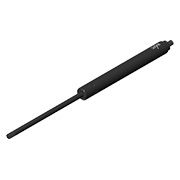
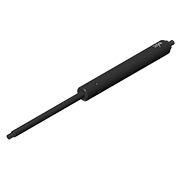
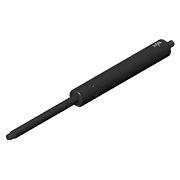
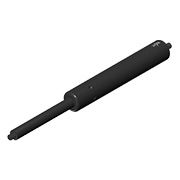
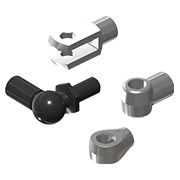
Login and Registration Form